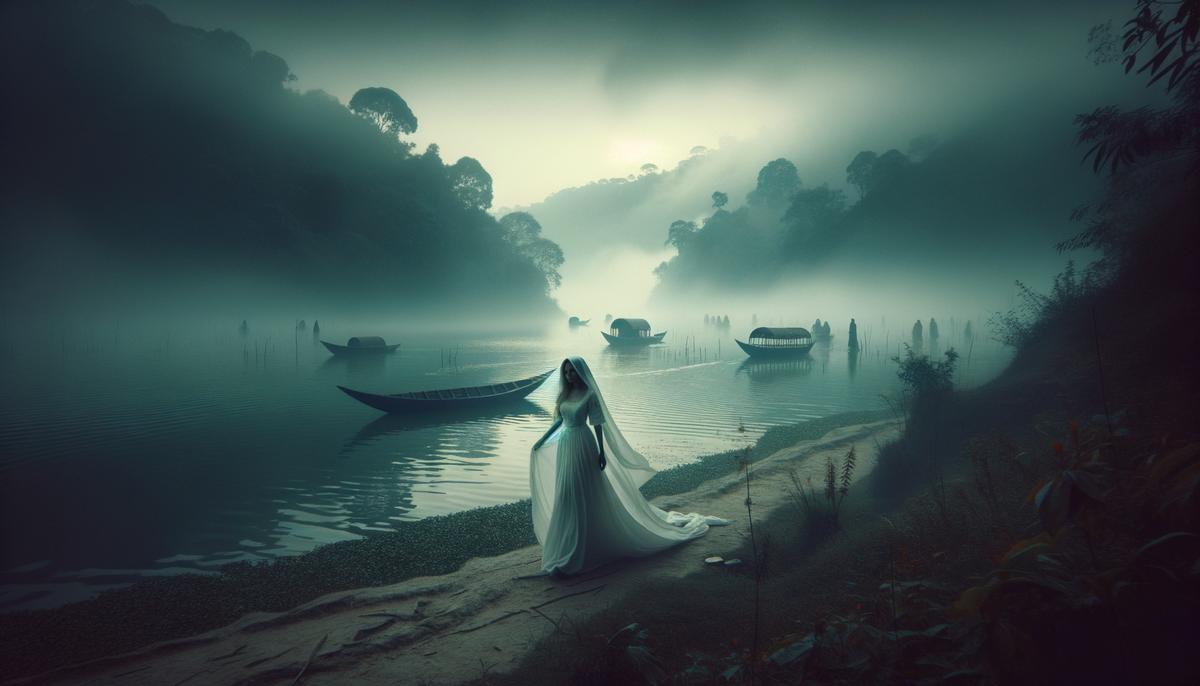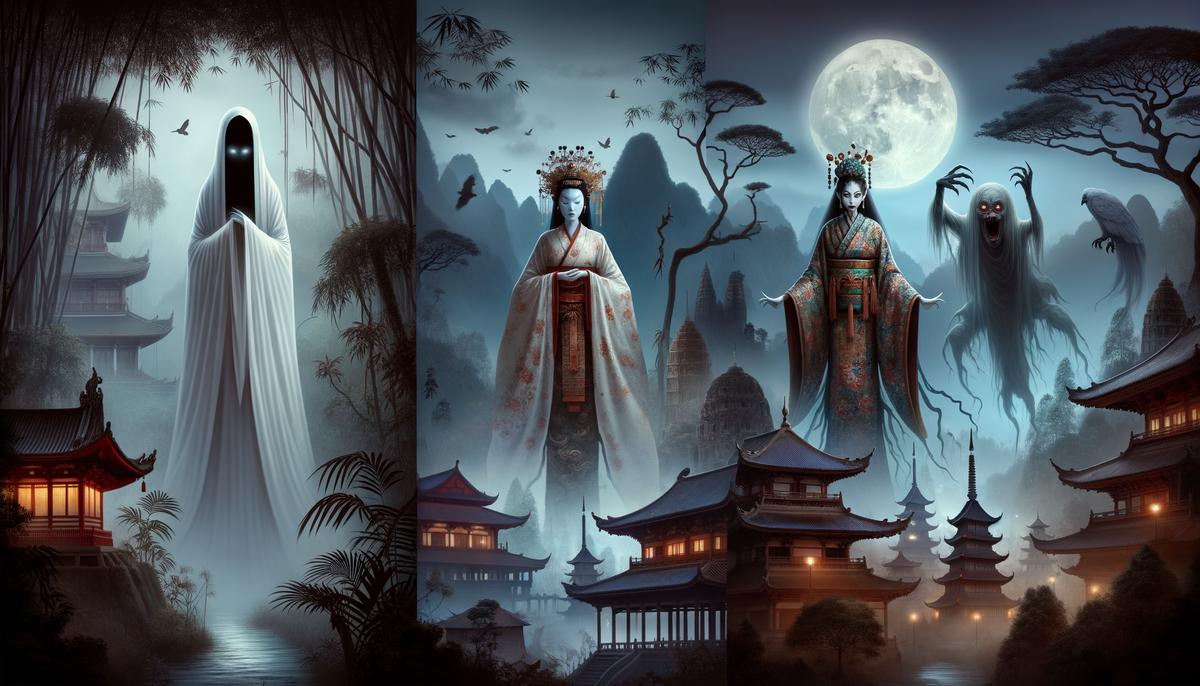Asian Ghost Stories: A Tapestry of Terror
Picture this: You're walking through a dark forest at night. The air smells of cedar and moss. Through the fog, a figure in white moves silently between the trees. Her hair flows like dark silk, and her eyes shine with an eerie light. Goosebumps rise on your skin as you realize this is no ordinary forest dweller. You've just met your first yurei, Japan's famous ghost of revenge and sorrow.
Asian ghost stories have a special power. Each tale whispers secrets of old traditions and forgotten fears. Unlike Western ghosts, Asian spirits mix history, beliefs, and culture, creating a web of terror that's both interesting and scary.
In Japan, yurei often come from unresolved problems or violent deaths. Wearing white burial robes, they float through old temples and empty houses, looking for peace. Stories tell of Oiwa, a woman betrayed by her husband, whose scarred face now haunts him forever.
In Thailand, you'll meet the pret, tortured spirits of greedy people, cursed to wander the earth always hungry and thirsty. Their tall, thin forms remind us of the dangers of greed. Even the bravest people are careful near old temples where these spirits might hide.
In Malaysia and Indonesia, the pontianak rules. This ghost of a woman who died during childbirth tricks men with her beauty before showing her true, scary form and attacking them. Her high-pitched screams chill the bones, and her flowery smell is the last thing you want to smell.
Chinese ghosts often reflect the duty to respect family. The hungry ghost, or e gui, represents souls forgotten by their families. These ghosts appear during the Ghost Festival, when the barrier between worlds is thin, and ancestor spirits look for food and fun from the living. Ignore them, and you risk their anger.
Though these spirits look and act differently, they all connect to the region's rich stories and respect for the spirit world. South Korea speaks of the virgin ghost, the cheonyeo gwishin, a sad figure whose cries echo in empty schoolyards or lonely mountain paths.
These tales are more than just stories; they show deep beliefs and history. In Cambodia, ghost stories often focus on the effects of war and suffering. The khmaoch sângkât—spirits of those who died violently—hover near places marked by tragedy, like the Killing Fields.
Every story holds a bit of truth, showing human nature across time and space.
Walk through the narrow streets of Hanoi, and you might feel the presence of a Vietnamese hồn ma, a restless spirit unwilling to leave our world. Their tales weave the troubled history of foreign rule and war, their whispers carried by the wind.
Each story is a mirror, showing our own fears, wants, and struggles with the unknown. Stand on a lonely mountaintop in the Philippines and hear the distant cry of a white lady, warning travelers of coming danger. Her appearance tells us about local folklore and the wider human experience.
Ghosts in Asia are more than just scary spirits; they're part of culture. Each ghost has roots in old customs, moral lessons, and historical events. They show the sorrows and unfairness that last for generations, calling out to us from the other side.
As the fog thickens around you, remember: these spirits are more than just scary stories. They are an important part of human storytelling, connecting us to our past and reminding us of our shared history. The next time you hear a strange whisper or feel an odd chill, think of it as a nod from the ghostly guardians of cultural stories, waiting to share their haunting tales.
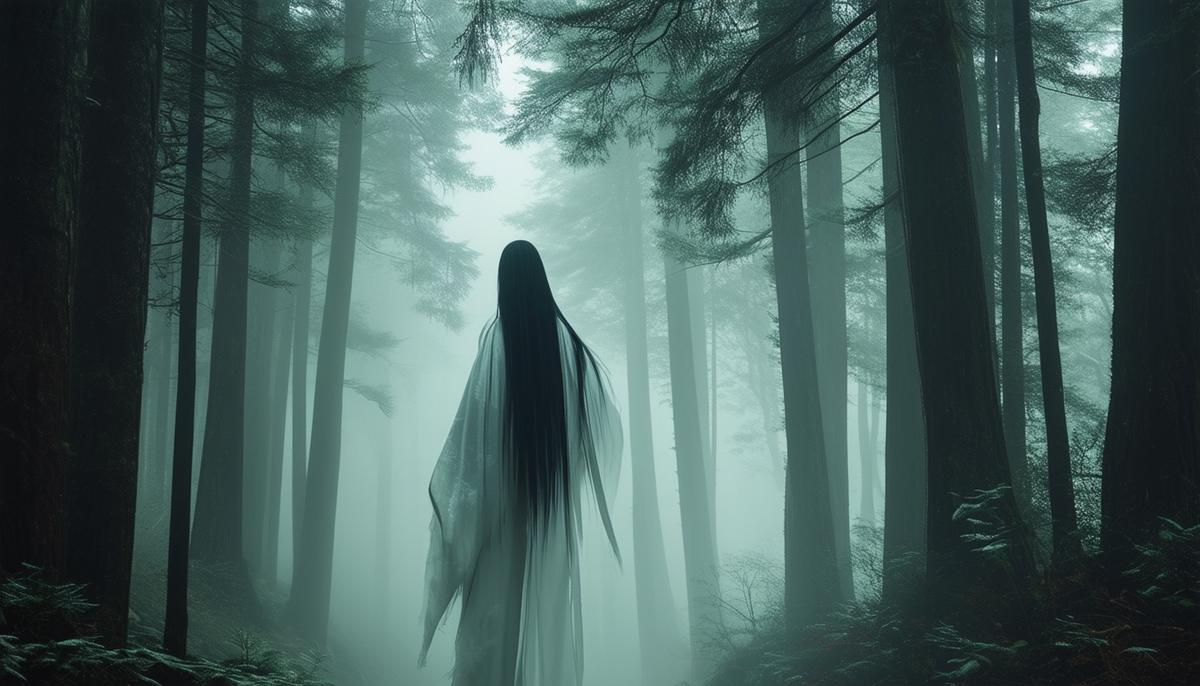
The Weeping Woman of Malaysia
Now, let's explore another chilling legend from the warm, tropical nights of Malaysia. Imagine: You're walking through the old streets of Kuala Lumpur, the air heavy with the smell of night-blooming jasmine. Shadows stretch long under the dim streetlights, making the sleeping city look eerie. As you walk, the hairs on your neck stand up – a cold, invisible hand seems to touch your back. Then, through the dark, you hear it: the sad cry of a woman, cutting through the night like an unseen knife.
You've just met the Weeping Woman.
Known locally as "Si Tanggang's Mother" or just "Si Tanggang," this ghost roams the streets looking for her lost child. Stories tell of a woman who faced great tragedy, losing her only son, and finally, her mind. Now, every night, she's forced to walk the streets, her sorrow echoing off old buildings and through narrow alleys.
Picture standing alone in the darkness, feeling an unnatural chill. Suddenly, mist forms around you, thick and hard to see through. From this ghostly fog, a figure appears. She wears torn, flowing robes that might once have been bright, her long, messy hair hides her face. The only constant—her haunted, endless cry, a sound so sad that it touches even the strongest hearts.
Local fishermen say they've seen her near the ports, her ghostly form moving among the docks, her cries mixing with the sound of waves. Some say the sea took her son, others think he got lost in the jungle, never to return. No matter how the story started, one thing stays the same: her endless sorrow and tireless search.
"Beware the Weeping Woman," the voices say, "for those who cross her path might be mistaken for the child she lost."
There are stories, told quietly, of people feeling a strange need to follow her cries, only to vanish into the night, never seen again.
The legend of the Weeping Woman is more than a ghost story. It shows deep, motherly love and great sadness. It speaks to the pain of loss that everyone can understand and how far one soul will go to find another. Her tale reminds us to cherish our loved ones, because the lines between the living and the dead, between joy and sorrow, are thinner than we might want to believe.
So, next time you're on a quiet Malaysian street, surrounded by the mists of night, and you hear that unmistakable, sorrowful cry, be careful. The Weeping Woman's grief is a powerful force, an endless search that stretches across time, space, and even life and death. She roams not just looking for her child, but also as a strong reminder of a mother's love, and the lasting sorrow of loss.
Remember her story as you think about the rich culture in these tales—every cry, every misty ghost is a sign of the feelings that shape our shared human experience. And maybe, just maybe, by understanding her sorrow, we might find a way to honor the spirits that walk among us, with a whisper and a knowing nod.
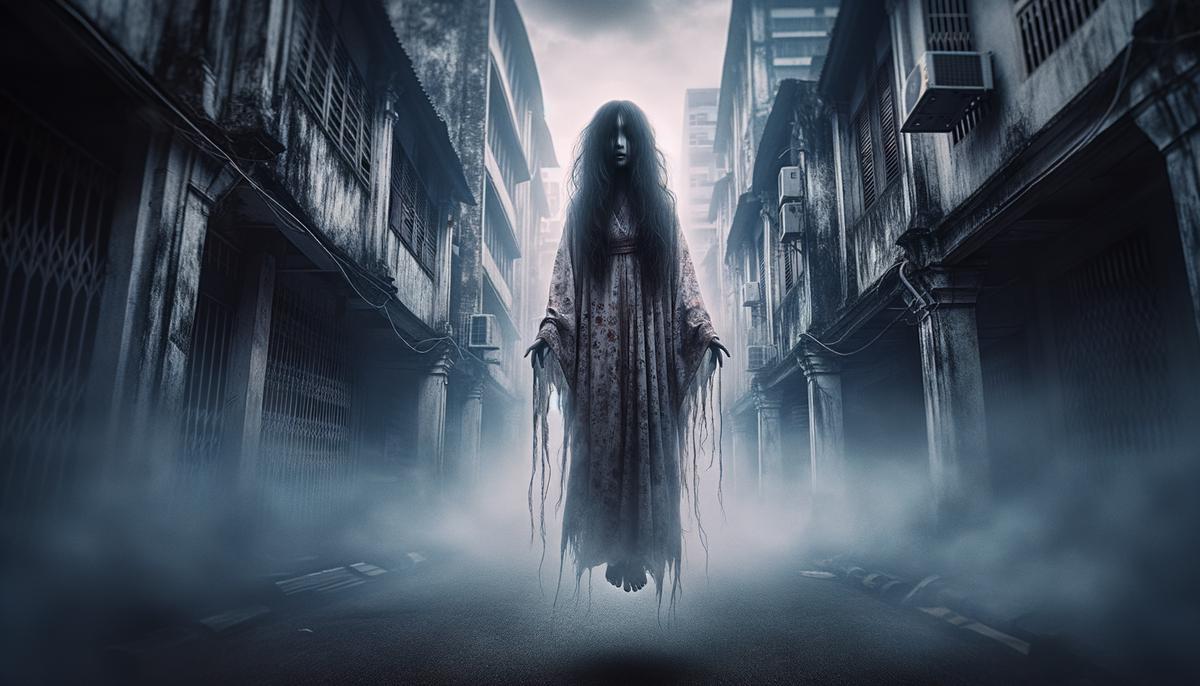
The Haunting of Phra Khanong Cemetery
Imagine this: The moon hangs low over Bangkok, casting long shadows on the old Phra Khanong Cemetery. The air is thick and still, as if holding its breath. The cemetery, with its old headstones covered in vines and moss, feels like a forgotten place where the past refuses to stay buried.
In the middle of this scary place, shadows dance between the graves, moving too smoothly to be cast by anything living. You hear the soft rustling of leaves, like whispers shared among the dead. The hairs on your arms stand up, reacting to the strong feeling of unease that settles over you. This is Phra Khanong Cemetery, a place where the line between the living and the dead is almost gone.
Local stories tell of a young woman named Nak, whose love and sorrow last forever, making her the most famous of these ghostly residents. In the early 1800s, Nak lived in a nearby village, married to a man named Mak. When Mak was taken into the military, Nak was left alone and pregnant. Sadly, she and her baby died during childbirth, but her love for Mak was so strong that it kept her spirit in this world. When Mak returned, he found Nak waiting, her ghost not knowing she had died. He only realized the truth when the neighbors told him, leading to a sad meeting that ended with monks stepping in.
Today, people say Nak still wanders the cemetery, a quiet, sad figure in white. Her presence often comes with the faint smell of frangipani flowers and an otherworldly chill. On some nights, under the full moon, some claim they've seen her sitting by her grave, her sad eyes fixed on the horizon, forever waiting for her beloved Mak.
But Nak is not alone. The Phra Khanong Cemetery is also said to be haunted by shadowy figures that move between the headstones, seen out of the corner of your eye but vanishing when you turn your head. These spirits, a mix of restless souls and angry ghosts, create an atmosphere thick with suspense and fear.
Strange lights are often reported in the cemetery, appearing as glowing balls that float just above the ground. Doubters might say they're tricks of the light or swamp gas, but those who've seen these ghostly lights swear they have a purpose. Some believe they are the spiritual remains of old Thai warriors, guiding lost souls to the afterlife or perhaps seeking forgiveness for past wrongs.
Then there are the noises – the strange sounds that break the cemetery's uneasy silence. Whispers with no source, the faint playing of traditional Thai instruments, and the sad cries of unseen children echo through the night, weaving a tapestry of sorrow and mystery. These odd sounds challenge even the most logical explanations, leaving ghost hunters both interested and terrified.
Why does Phra Khanong Cemetery hold so many restless spirits?
The answer lies partly in history. Phra Khanong has seen its share of suffering, from wars and invasions to diseases and natural disasters. Each tragedy leaves its mark, a spiritual scar that lasts long after the final breath is taken. The cemetery becomes a place where these ghostly remains gather, where past injustices and heartaches are forever replayed.
As you stand in the sacred grounds of Phra Khanong Cemetery, every sense alert to the surrounding ghostly activity, a chilling thought crosses your mind. These ghostly figures, strange lights, and mysterious sounds are more than just old stories; they are the echoes of lives once lived and stories unfinished. Each restless spirit serves as a haunting reminder of how fragile life is and the unresolved emotions that tie us to this world and the next.
So, the next time you're in Bangkok, drawn to the haunting appeal of the Phra Khanong Cemetery, walk carefully. Listen to the whispers, respect the lights, and acknowledge the shadows. These are the spirits of a history rich with emotion and a region full of stories that refuse to fade. Honor their presence, and perhaps, they might just let you walk away, carrying their tales and mysteries with you, forever etched into your soul.
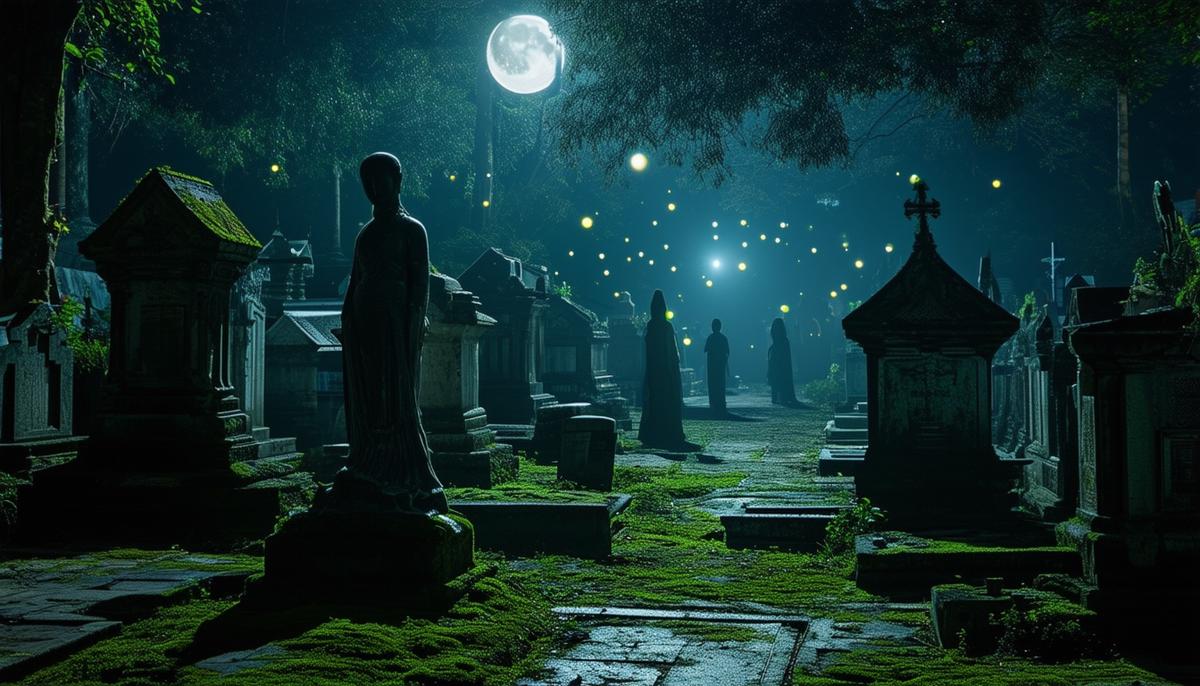
The Ghost Soldier of the Great Wall
Picture this: You're walking along the ancient stones of the Great Wall of China. The vast Wall stretches across the rugged landscape, bathed in twilight. The air is cool and still. Suddenly, you feel a change in the air. The temperature drops, and you hear a faint echo of marching feet.
You've just met the Ghost Soldier of the Great Wall of China.
Legend says this ghostly soldier was once part of the garrisons that protected the Wall. His spirit is forever tied to this huge structure, unable to rest because of past battles. The Ghost Soldier appears in old-style armor, its shine dulled by years of patrolling. His empty, sad eyes seem to look through you, searching for something lost.
The ghost is surrounded by a misty glow that sets him apart from the living. He moves slowly, each step heavy with duty. His face shows determination, hinting at the big sacrifices made during his time.
"Many believe the Ghost Soldier's restless spirit is because of the fierce battles fought along the Wall. These brutal fights left a mark on the structure and on the souls of those who died defending it."
Night-time visitors often report hearing faint sounds of armor and battle cries, as if echoes from the past. Some say they've seen the Ghost Soldier standing watch, his ghostly figure appearing and disappearing. Seeing his patrol is both amazing and sad, reminding us of lives lost for empire and safety.
As you continue your journey, the rhythm of his ghostly footsteps stays with you. The Ghost Soldier stands as a silent guardian, forever watching and reminding us of the human spirit in the face of endless struggle.
Next time you explore the Great Wall, step softly and listen carefully. The Ghost Soldier might be closer than you think, his endless duty a haunting reminder of the history built into the very stones beneath your feet.
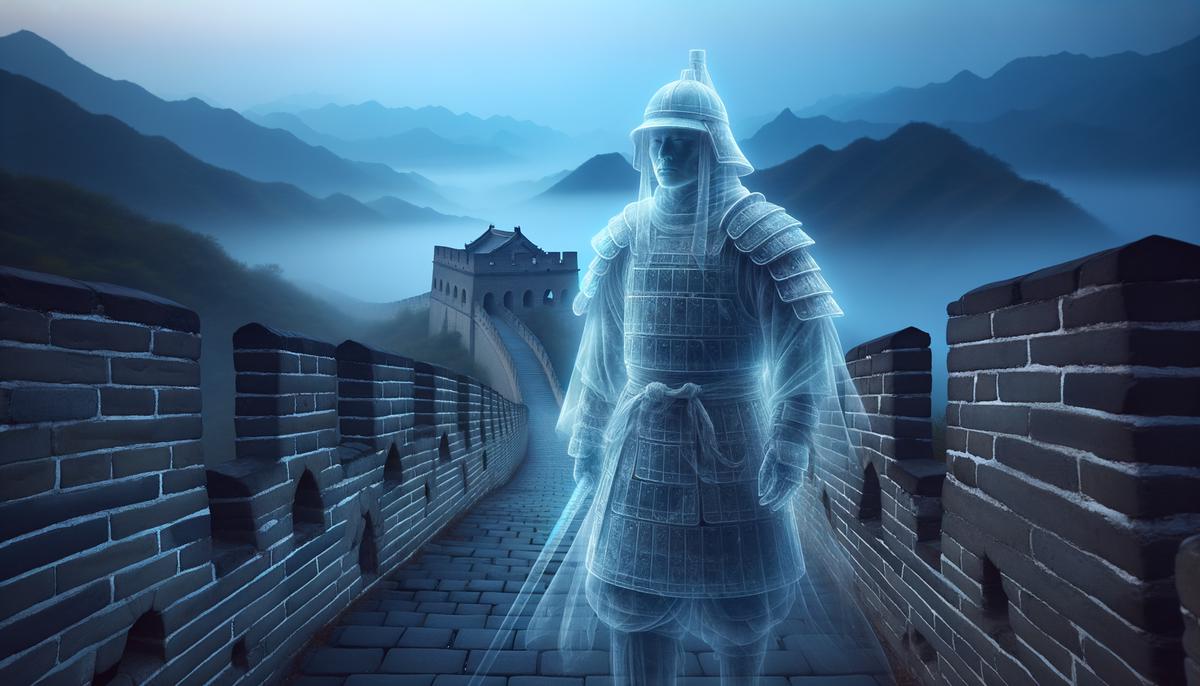
The Haunted Forest of Aokigahara
Imagine stepping into the dark, dense Aokigahara Forest at the foot of Mount Fuji in Japan. This green maze, often called the Suicide Forest, is wrapped in an eerie silence. The wind barely moves the leaves, creating an unsettling stillness that makes every footstep sound loud. The thick canopy of twisted trees forms a natural maze where it's easy to get lost.
The air here feels heavy with sadness that seeps into your bones. Paths wind through the forest, but straying from them can lead you deep into its confusing heart. Aokigahara's volcanic soil absorbs sound, making the atmosphere strangely quiet, as if the forest is swallowing every noise.
As you walk through this spooky woodland, the trees seem to close in around you, their twisted branches like bony fingers reaching out. The forest floor is covered with roots that twist and coil, looking like trapped souls. In these remote areas, people often report seeing ghosts.
- Shadowy figures moving between trees
- Whispers and cries for help
- The chilling sound of weeping carried on the still air
Aokigahara has a sad history. For hundreds of years, it has been a place where people in pain chose to end their lives. It's said that the yurei—spirits of those who died with unresolved feelings—linger here, unable to find peace. These restless souls are often described as pale, ghostly figures, their sad presence a reminder of lives that ended too soon.
Local people deeply respect and fear Aokigahara. They believe it's a place where the line between the living and the dead is thin. Every step feels like you're disturbing a place that demands quiet respect. Guides often tell visitors to bring a ribbon or string to mark their path, to avoid becoming one of the forest's lost souls.
Despite its dark reputation, Aokigahara's mystery also attracts people interested in the supernatural. Ghost hunters and thrill-seekers come here hoping to see something spooky. Many leave with more than they expected, telling stories of strange encounters and unexplained events. Flashlights flicker, cameras stop working, and people feel like they're being watched.
If you ever find yourself at the edge of Aokigahara, ready to step into its shadowy embrace, remember its heavy history and the sorrow that fills its air. Tread carefully, listen to the whispers, and honor the spirits that remain tied to this place. The silent forest keeps its secrets, showing glimpses only to those who dare to look.
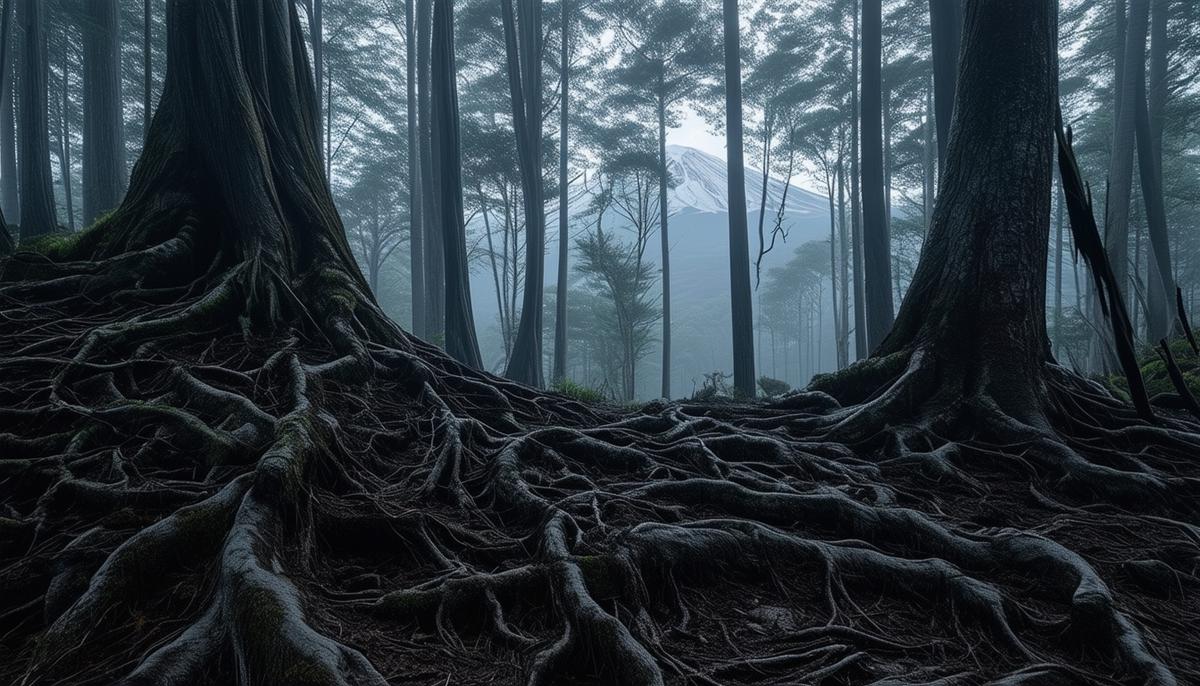
The White Lady of Balete Drive
Imagine: It's a late, moonless night in Quezon City, and you're driving down the infamous Balete Drive. The street, lined with tall balete trees, is so dark that it blocks out any starlight. The only light comes from your car's headlights, cutting through the thick wall of shadows ahead. There's an eerie calm that makes you grip the steering wheel tighter, all your senses on high alert.
Suddenly, a figure appears out of nowhere, standing in the middle of the road. She's wearing a long, white dress that moves as if caught in a ghostly breeze. Her dark, flowing hair hides her face. You slam on the brakes, your heart pounding, but it's too late. The figure vanishes as quickly as she appeared, leaving you with a lingering chill.
"You've just met the White Lady of Balete Drive."
This ghostly figure has haunted this stretch of road for generations. She's always dressed in white, her long hair hiding a face that some say shows the pain of her untimely death.
Taxi drivers often see her ghostly appearances. Imagine driving late at night, tired but finishing your shift. As you approach Balete Drive, you see a woman in white seated in the backseat through your rearview mirror. You could swear the seat was empty moments ago. When you look back, she's gone, leaving only an unsettling feeling.
Locals have their share of encounters too. Many stories tell of people walking along Balete Drive late at night, feeling a need to look over their shoulder, only to see the White Lady's haunting face a few steps behind them. One story tells of a young motorbike rider who suddenly felt icy hands around his waist while speeding down the empty road. He crashed his bike and saw her figure disappearing into the shadows.
The origins of the White Lady are unclear. Some say she was a beautiful young woman who died tragically on this road, either in a terrible car accident or as a victim of a violent crime. Others believe she might be the ghost of someone from the Spanish era, her spirit unable to find peace due to some unsolved wrong.
Each story of the White Lady adds to the mix of fear and fascination around Balete Drive. Her tale serves as a chilling ghost story and a sad reminder of the unresolved pain that can keep a spirit in the living world.
So, next time you find yourself driving down Balete Drive, try not to look in the rearview mirror. Keep your eyes on the road, and remember the many stories of those who weren't so lucky. The White Lady roams this haunted street, forever searching, forever haunting.
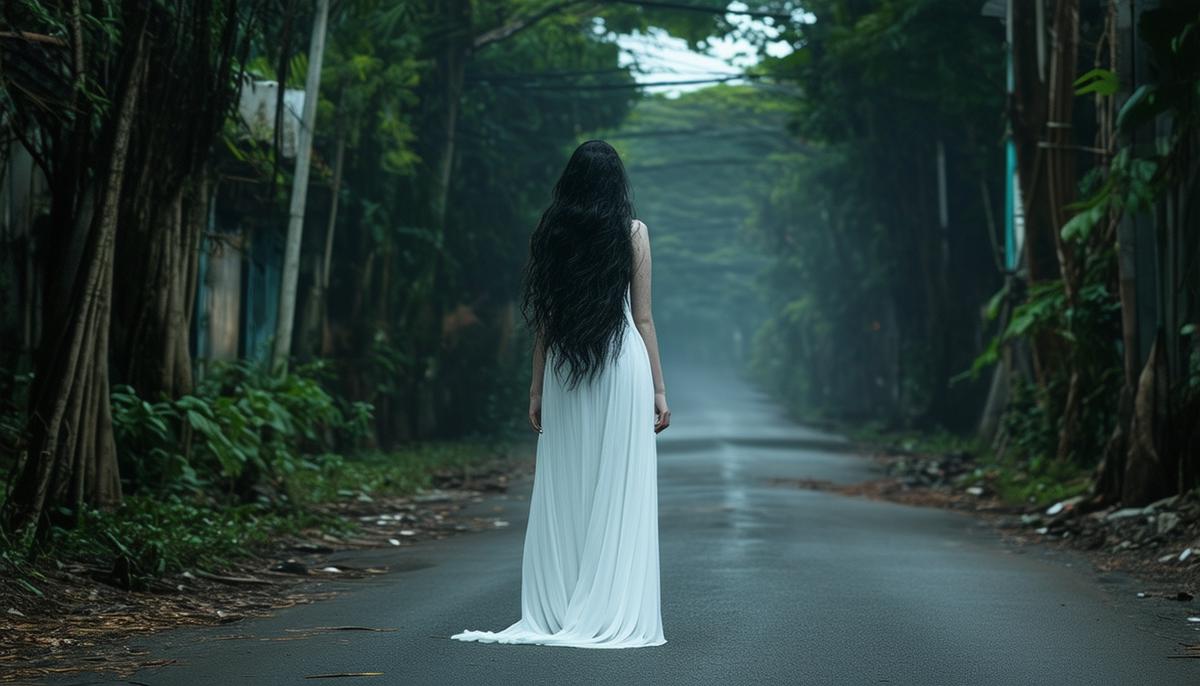
The Haunting of Changi Hospital
Picture this: You're standing at the entrance of the old Changi Hospital in Singapore. The wind whispers through broken windows, carrying hints of forgotten memories. The moon casts a pale light on the crumbling building, revealing dancing shadows. As you step inside, the air grows colder, wrapping around you like an invisible cloak. You feel like you're being watched.
Built in 1935, Changi Hospital was an important medical center during World War II. But it's not just history that haunts its halls. The Japanese used it as a prison camp and torture site. The awful things done here left lasting marks on the building itself.
Walking through empty hallways, your footsteps echo louder than they should. The weight of sadness and pain feels almost real. Stories tell of ghost figures roaming these halls, appearing and vanishing in an instant.
- A nurse in an old-fashioned uniform, tending to patients only she can see
- Sounds of crying and screams in the former prisoner ward
- Cold spots that make your hair stand on end
- Feelings of being watched or touched by unseen hands
Despite its scary reputation, Changi Hospital draws ghost hunters and thrill-seekers. Many leave believing they've seen something supernatural: strange lights in photos, voices on tape, and stories of ghostly encounters that can't be explained.
"Whether you believe in ghosts or not, Changi Hospital reminds us of both human kindness and cruelty. It's a place where past and present meet, forcing us to face echoes of history that linger in the shadows."
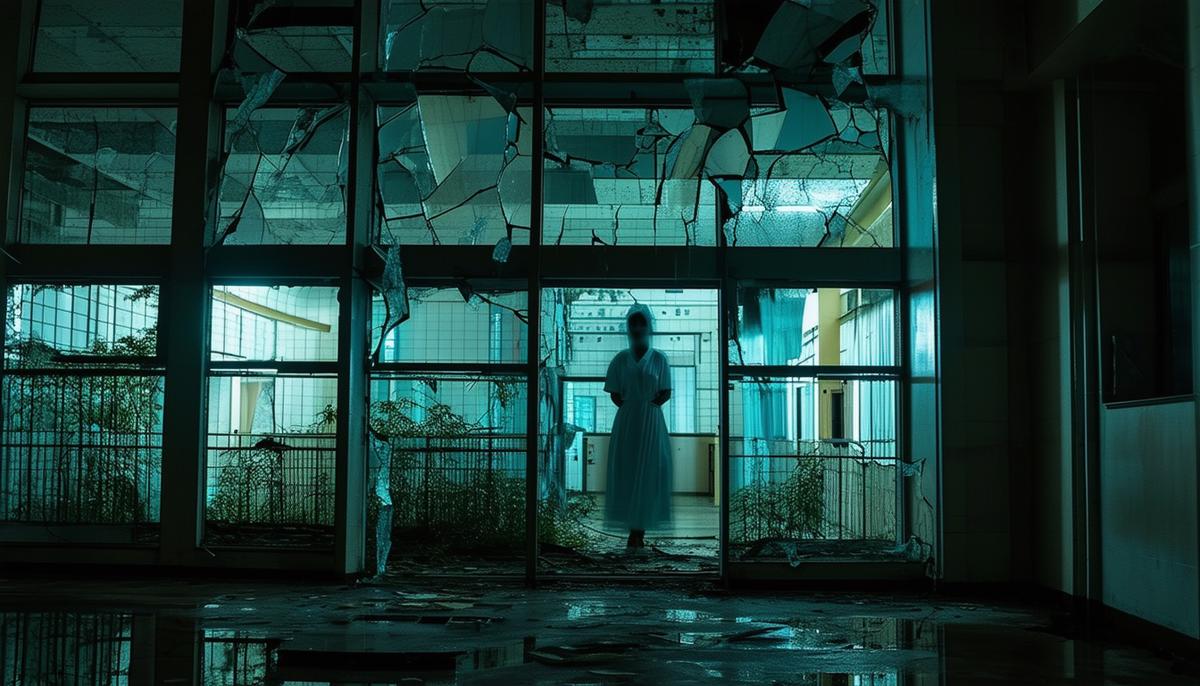
The Screaming Prince of Shaniwarwada Fort
Imagine standing before the grand gates of Shaniwarwada Fort in Pune, India. This huge structure, built in the 18th century, holds a history rich with power, betrayal, and tragedy. As the sun sets, the fort's outline looks more sinister. The air grows heavy, and a strange chill settles over the ground.
Legend says Shaniwarwada Fort is haunted by the ghost of a young prince. On full moon nights, his blood-curdling screams echo through the dark halls, scaring even the bravest souls.
The story goes back to 1773, when 18-year-old Narayanrao, the fifth Peshwa ruler, was brutally killed by his own family members. His uncle and aunt planned the murder. It's said Narayanrao's cries of "Kaka mala vachva" (Uncle, save me) echoed through the walls as guards killed him.
Those same cries are said to pierce the night air on full moons. The fort's gardens and halls become a maze of echoes, with heart-wrenching screams seeming to come from every shadowy corner.
- Visitors report hearing a child's agonized wails
- Night guards have quit after hearing the cries
- Some feel an unseen presence watching them
Historians and ghost hunters are fascinated by Shaniwarwada Fort's spooky legend. Some think the screams are leftover energy from the violent betrayal. Others believe the young Peshwa's spirit is trapped, reliving his last moments.
Even during the day, when the fort is full of tourists, a feeling of sadness hangs in the air. Every brick and stone holds the weight of Narayanrao's pain, a silent witness to the betrayal that tore a royal family apart.
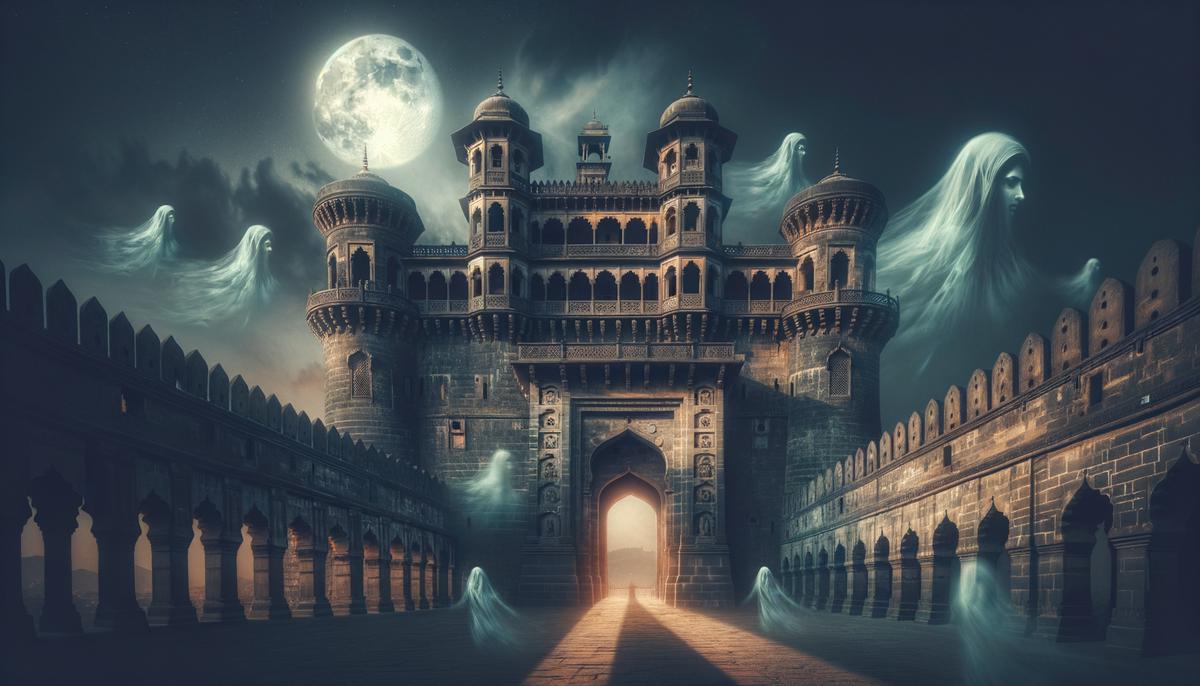
The Vengeful Spirit of the Pontianak
Picture this: You're walking through a dark, moonlit grove near Jakarta. The air is humid and smells like sweet flowers. The night feels alive, as if the leaves are whispering old secrets. Suddenly, you hear faint cries and eerie laughter. A cold shiver runs down your spine. The trees seem to close in, their twisted branches casting creepy shadows. Your heart races, and then you see her.
This is the Pontianak.
At first, she looks like a beautiful woman with long, flowing hair. But as she gets closer, her true form becomes clear. Her eyes turn black and hollow. Her white dress is stained with red. The Pontianak's face, twisted with anger and sadness, shows the pain of her past—a woman who died while giving birth.
Known throughout Indonesia, the Pontianak is a spirit that causes both fear and sorrow. Stories say she's angry at men, blaming them for her death and the loss of her baby. She lures victims with her beauty before showing her monster-like, rotting face.
- She attacks with sharp claws
- Some say she rips out organs, especially from men
- Others believe she steals babies and unborn children
Villagers warn others not to go out after dark or ignore the smell of sweet flowers in the air. They hang garlic or sharp objects like nails outside their homes to keep the spirit away. Parents tell their children about the Pontianak to keep them safe.
So, if you ever smell sweet flowers on a lonely Indonesian night, be careful. The Pontianak's sorrow and anger echo through time, a reminder of the pain of lost motherhood and the power of revenge.
Beware the dark paths where she waits, ready to turn beauty into horror in an instant.

The Haunted Cu Chi Tunnels
Imagine standing at the entrance of the Cu Chi Tunnels in Vietnam. These narrow passages, barely tall enough to crouch through, stretch underground like a hidden maze. Built during the Vietnam War, they were once full of life, death, and battle.
As you enter the dark, damp corridors, the air feels heavy with the smell of earth and something else—whispers of the past. The Cu Chi Tunnels are famous not just for their war history, but for ghost stories that live on long after the last soldier left.
People say the tunnels are home to spirits of fallen soldiers, both Vietnamese and American. As you walk, your footsteps echo against the cold walls. You can't shake the feeling that you're not alone.
- Visitors report seeing ghostly soldiers in uniform, their faces frozen in pain or determination
- Some hear whispers, shuffling feet, or the sound of weapons being reloaded
- Others claim to hear distant explosions and cries of
Incoming!
Why are the Cu Chi Tunnels so haunted? The answer lies in the terrible experiences that happened here. During the war, the tunnels were a living nightmare. Soldiers and civilians faced unthinkable hardships. The tunnels saw both bravery and horror, creating a powerful atmosphere charged with strong emotions and human suffering.
If you visit these haunted tunnels, be careful and respectful. Listen for the whispers, feel their pain, and remember their stories. The spirits of Cu Chi want not just to scare us, but to make sure we never forget.
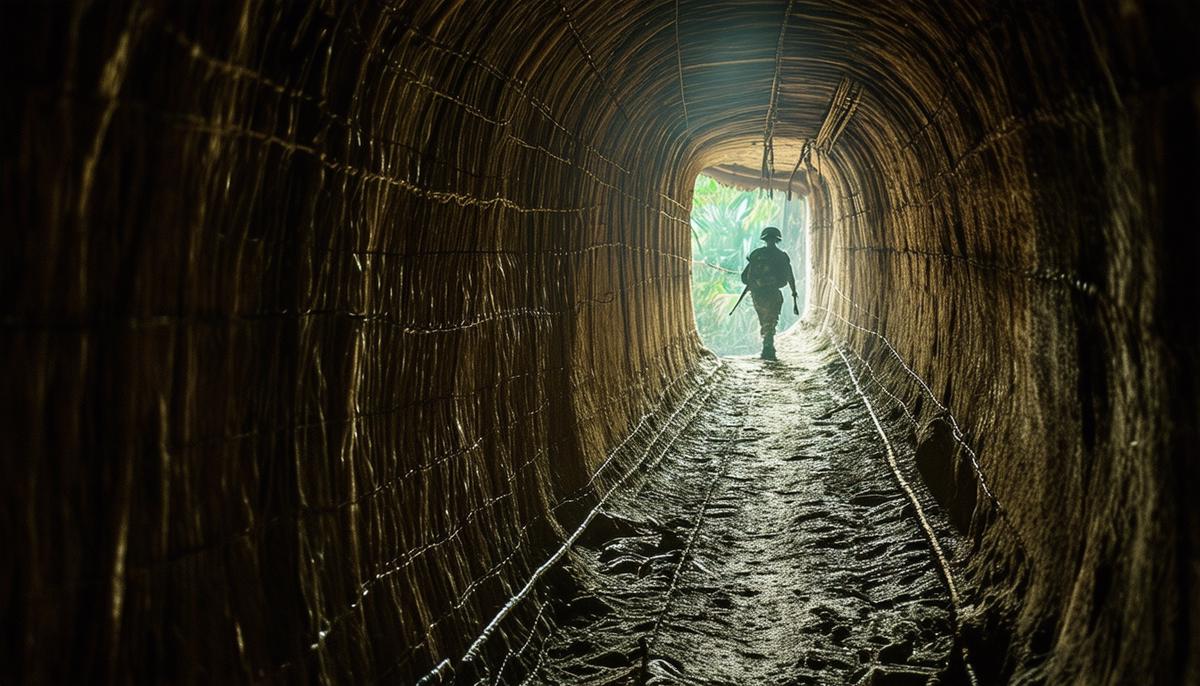
The Ghost of Cheonggyecheon Stream
Picture yourself walking along Cheonggyecheon Stream in Seoul, South Korea. This urban oasis is peaceful, with soft lights and greenery muffling the city noise. But as night falls, a strange feeling creeps in.
Legend says that when the moon is high, a ghostly woman appears from the water. She wears a flowing hanbok, the traditional Korean dress, with long black hair. Locals call her the Cheonggyecheon Specter, a ghost that chills even the bravest souls.
The first sighting goes back to the Joseon Dynasty when the stream was dirty and neglected. People thought she was the spirit of a young woman who died tragically. Her sad ghost stayed tied to the waters, reliving her last moments over and over.
Modern encounters are very similar:
- People feel very sad before seeing her
- The air turns cold
- She appears silently, looking deeply sad
- When approached, she vanishes like mist
Why does this ghost linger here? To understand, we need to look at the stream's history. Once an open sewer, it was covered and forgotten as Seoul grew. This neglect matched the suffering of poor workers who lived nearby. In the early 2000s, a big project restored the stream, making it beautiful again.
But the troubled past still casts a shadow. The ghost reminds us of forgotten souls whose lives were woven into Seoul's history. Her presence shows how progress and the past can uneasily exist side by side.
Next time you're by Cheonggyecheon Stream, remember the stories beneath its calm surface. Enjoy its beauty, but also think about its past. The ghostly woman asks us to remember the forgotten parts of our shared story.
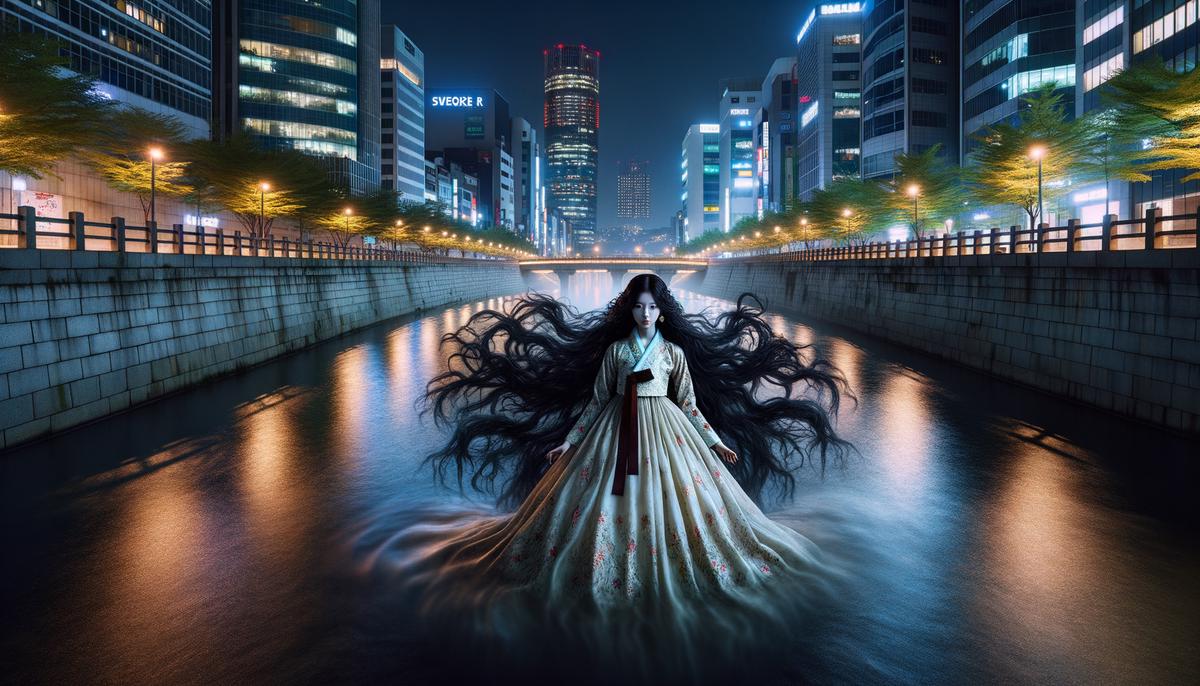
The Haunting of Bride's Pool
Imagine hiking in Tai Po, Hong Kong. The mountain air is fresh as you follow the path to Bride's Pool. As you get closer, everything becomes strangely quiet. The water shines under the moonlight, reflecting twisted tree branches above.
Legend tells of a bride long ago, traveling to her wedding on this path. Dressed in white, she and her group were excited. But heavy rain made her chair slip, and she fell into the pool. Her heavy dress pulled her down, and she drowned in the waters now named after her.
People say the bride's ghost can't rest. She's always looking for the happiness taken from her. Visitors often see a ghostly woman in a wet, white wedding dress near the pool. Her face is blank, but her eyes are full of sadness.
Weird things happen at Bride's Pool:
- People hear soft wedding music on the wind
- Some feel very cold in certain spots
- Others say they feel pulled toward the water
- A fisherman once heard crying and saw the bride's ghost
The pool isn't just scary; it's part of Hong Kong's rich culture. It's a place where beauty meets sadness. Parents warn their kids to be careful here, telling stories about sudden chills and strange feelings in the air.
Some think the bride's ghost mistakes visitors for her lost groom. They say she tries to pull people into the water, just like she was pulled down.
If you visit Bride's Pool, be careful and respectful. Listen to the leaves and the water. You might feel her presence, reminding us of a love cut short and a life lost too soon. Her ghost guards the pool, making sure we never forget her story.
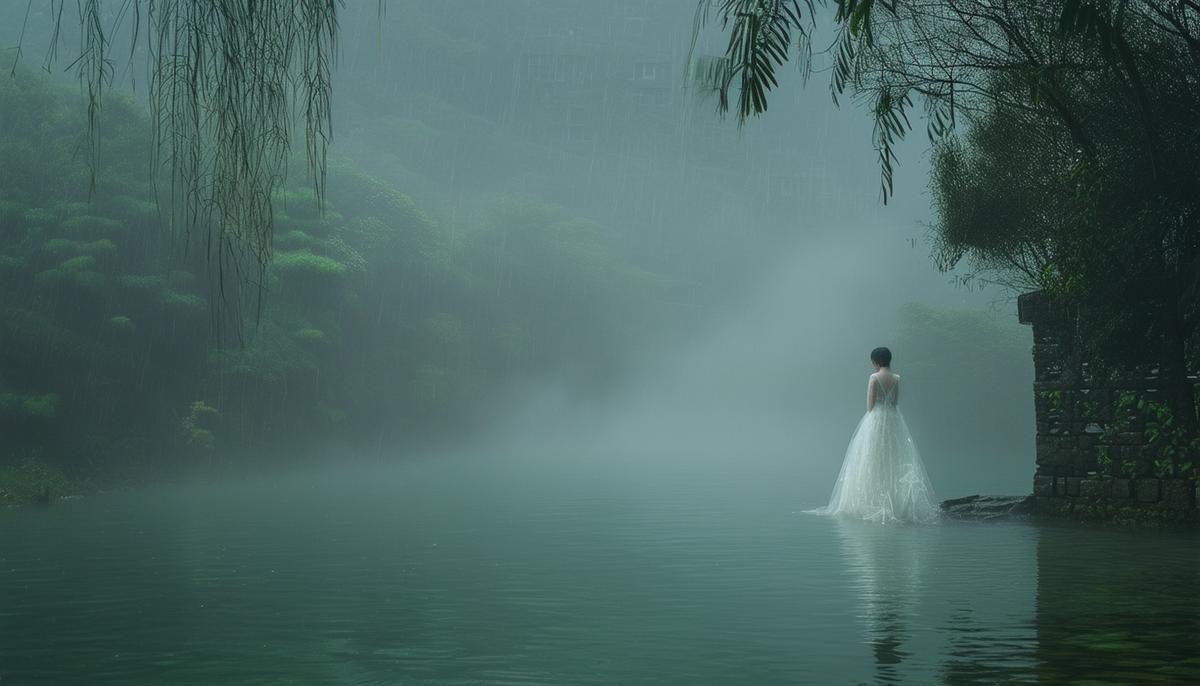
The Haunted Galle Face Hotel
Picture this: You're standing in front of the Galle Face Hotel in Colombo, Sri Lanka. The grand building looks out over the Indian Ocean. As night falls, the hotel's mood changes. The past seems to seep through the walls, whispering secrets.
Built in 1864, the Galle Face Hotel is known for luxury – and for ghosts. The most famous is a British soldier. Guests and staff have seen him walking the halls in his red coat, sometimes vanishing through closed doors.
Imagine staying at the hotel. As midnight nears, you hear marching boots in the quiet hallway. You look out and catch a glimpse of the soldier turning a corner and disappearing.
Guests tell spooky stories:
- A couple felt someone sit on their bed at night. When they turned on the light, no one was there – but the mattress was dented.
- A business traveler saw a soldier's reflection in the window, which faded away.
- People have felt cold drafts, seen lights flicker, and felt unseen hands touch them.
Staff have their own tales:
- Housekeepers find rooms they just cleaned suddenly messed up.
- Tools go missing and show up in strange places.
- A guard heard old-fashioned music from an empty ballroom.
Why so many ghosts? Some think it's because of the hotel's long history and the strong emotions of those who lived and died there. The British soldier might be stuck because of the horrors of war he saw far from home.
"History and ghosts walk hand in hand here, weaving a mystery that draws in curious visitors."
Next time you visit the Galle Face Hotel, listen for whispers of the past. Feel the cool drafts. If you're brave, take a midnight walk through its haunted halls.
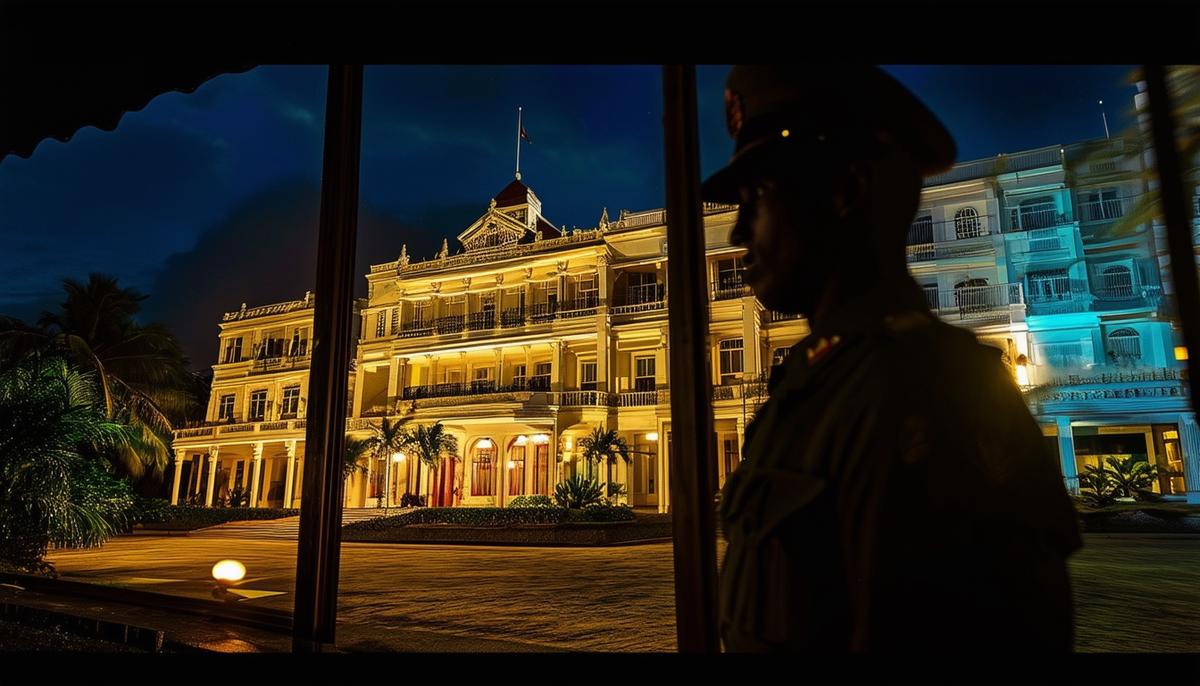
The Haunted Foy's Lake
Picture this: You're at Foy's Lake in Chattogram, Bangladesh. This man-made lake, built in 1924, is surrounded by green hills often covered in mist. It's beautiful, but it has a dark side – ghost stories that will give you chills.
As night falls, the lake changes. The normal sounds stop, replaced by an eerie quiet. The air feels heavy. People come here not just for the scenery, but for the chance to see a ghost.
The most famous ghost is a young woman in white. People say she walks along the edge of the lake, looking sad. Some think she drowned here long ago and can't rest.
Imagine sitting by the lake at sunset. Suddenly, you hear a soft cry coming from the water. You see the woman in white staring at you, then she vanishes, leaving you feeling cold.
Other ghosts haunt Foy's Lake too:
- People hear children laughing and crying in the trees.
- Boaters feel small hands tugging at them when no one's there.
- A man once saw a ghost child sitting in his boat, which disappeared when he tried to talk to it.
The lake's history might explain the ghosts. In 1947, when India was split into two countries, many people died in this area. Some think their spirits are still here, unable to find peace.
Visitors report strange things:
- Feeling like something is pressing on their chest
- Finding very cold spots that seem to move
- Seeing shadowy figures with glowing eyes by the water at night
People who come at night often bring candles or say prayers to stay safe from the ghosts. Guides tell visitors to stay on the paths and avoid the woods and water after dark.
"Listen for whispers and watch for ghosts. Remember to be respectful – these spirits are part of the lake's sad history."
If you visit Foy's Lake, be careful. Their stories are now part of what makes Foy's Lake both beautiful and scary.
